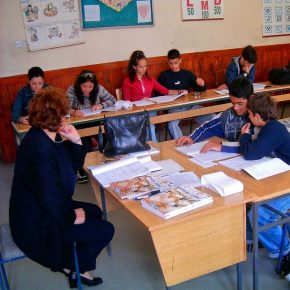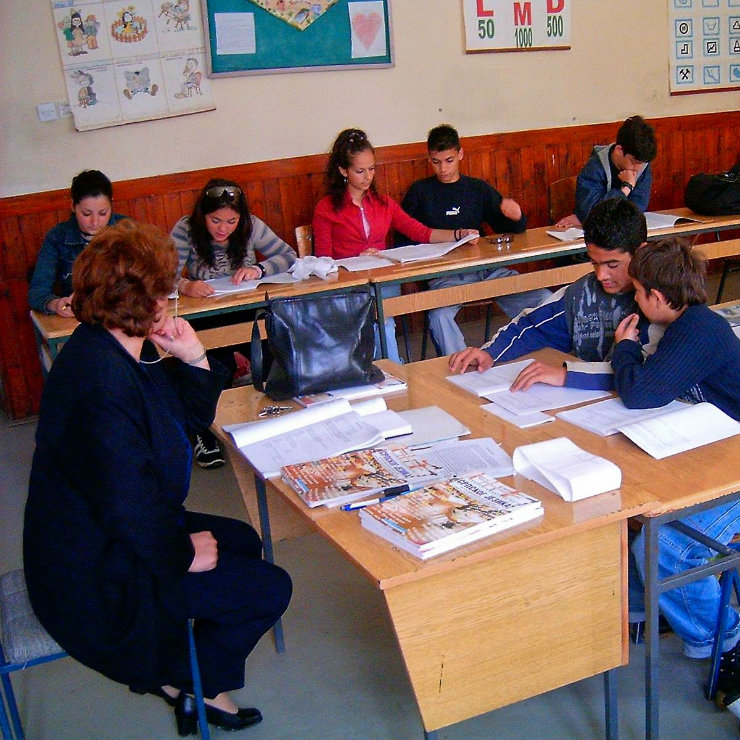
High school in Serbia (World Bank, CC BY-NC-ND)
The agreed guidelines and conclusions relate primarily to the issues of macroeconomic and fiscal stability, but also to the structural reforms that Serbia should pursue. It is expected that there will be a guideline for further maintenance of a low budget deficit and for the introduction of strict rules to continue this trend.
According to this document, it is necessary to reduce the share of public spending for salaries and pensions to solve the issue of unsecured receivables, to complete the reform and privatization of the two remaining large state banks and to find a solution for the other smaller ones, to find solution for accumulated debt of Srbijagas company, as well as restructuring and optimization of Elektroprivreda Srbije.
However, among all these measures there are those that go beyond the scope of financial and economic issues and engage in wider social reforms. Such is the recommendation that the Government of the Republic of Serbia, in cooperation with the „social partners” and the „business sector”, introduce dual education into the Serbian education system.
Why dual education?
The concept of dual education has been spoken of in Serbia for the past several years, pointing to successful models in some European countries, primarily Germany and Switzerland. However, the key reason for insisting on this change is the belief that the introduction of dual education will contribute to the harmonization of the education system with the needs of the labor market and thus contribute to the greater employment of young people in Serbia. Which is one of the biggest economic challenges.
According to the plans of the Serbian government dual education will be introduced gradually into the Serbian secondary education system starting now. The term refers primarily to technical and vocational schools for whose educational profiles is in a high demand in the labor market. Advisor for dual education Gabrijela Grujić talked with the representatives of the tire factory Magna that will cooperate with the Technical School from Odzak. The director of the factory said that his company was ready to provide scholarships to high school students in the amount of RSD5,000 per month (a bit more than EUR40).
Perhaps the amount of the mentioned „scholarship” in the shortest time represents the fears that arose in the Serbian public regarding the Draft Law on Dual Education. Namely, many are concerned that this is a way to abuse the work of high school, and in doing so cuts the price of labor in sectors requiring lower professional qualifications (simpler production jobs, retail sector, etc.).
Not everybody is happy
The Free Citizens Movement led by Sasa Jankovic, former ombudsman, issued a statement stating that the model of dual education is „disastrous” and „harmful in every way to children”. They called for the withdrawal of the draft law. Also trade union organizations criticized the draft law. The Belgrade Vocational School Forum said it should be rejected „as unacceptable due to anachronism”. A similar statement was also issued by the United Trade Unions of Serbia „Sloga”, expressing their concern over certain legal provisions. This organization believes that dual education „in the proposed form will pave the way for all possible abuses by some employers”.
Employers’ representatives are also dissatisfied with this proposal. According to the broadcasting of Radio Television of Vojvodina, the union of employers stated it did not receive an official invitation to discuss this bill, and that the process of its creation was unavailable to interested parties.
The public debate on the draft law was very short considering the potentially long-term social consequences of the implementation of such solutions – it started on May 26th. One hearing was held on June 1st in Nis and the debate ended on June 8th in Belgrade.
Restrictions and wages
The idea of a dual education, which is adapting the education system to the needs of the labor market – by itself is not problematic. However, as stated by critics, in its implementation, through the legislation, many problems and inconsistencies arise that create the possibility for future abuse.
According to the Labor Law, there are a number of restrictions when it comes to employment of minors. For the entry of a minor (a person under the age of 18) into employment there must be an agreement signed by parent or a legal guardian. However, as it is noted by Serbian lawyer and commentator at liberal web portal Peščank Marko Reljanović, when it comes to dual education parent’s approval is not necessary because working duties of high school pupils is a legal obligation. Parents can choose where their children will work, but, unfortunately, sometimes there is no such possibility.
According to the proposed law the work at employer during the process of dual education shout take at least as 50 per cent of time of all mandatory school subjects in three-year schools and at least 45 per cent at schools where programs take four years. The maximum amount of work done by pupils should not exceed 35 hours per week, which is legal maximum for underage persons.
The employer is required to provide confirmation to the Serbian Chamber of Commerce that they meet the requirements for the admission of children to the workplace. But it is not mandatory. The employer concludes a Dual education contract with the school, parents, legal guardians. The signatories of the Learning Contract Agreement may terminate it and then the school is obliged to provide the student work possibilities with another employer.
From the economic and financial point of view, the most challenging part of the legislation is the one that regulates the „financial security” of students. The student should be paid per working hour „at least 50 per cent of the minimum wage per hour of productive work”. The minimum working hour wage in Serbia is RSD130 (EUR1.08), so students involved in the process of „learning by doing” would get RSD65 (a bit more than EUR0.5).
However, despite all the shortcomings of the proposed legislation and the problematic implementation of the concept of dual education in general, the parliamentary majority stated that it would support this proposal. Assembly Speaker Maja Gojkovic said that the implementation of this law would significantly contribute to the decline in unemployment, especially among young people, and to faster economic development.
Milica Milojević is an economist, published economic analyst, and a part-time economic journalist with corporate, banking, and consulting experience. She has written papers on monetary and political economics, and economic history of Serbia and the Balkans.


